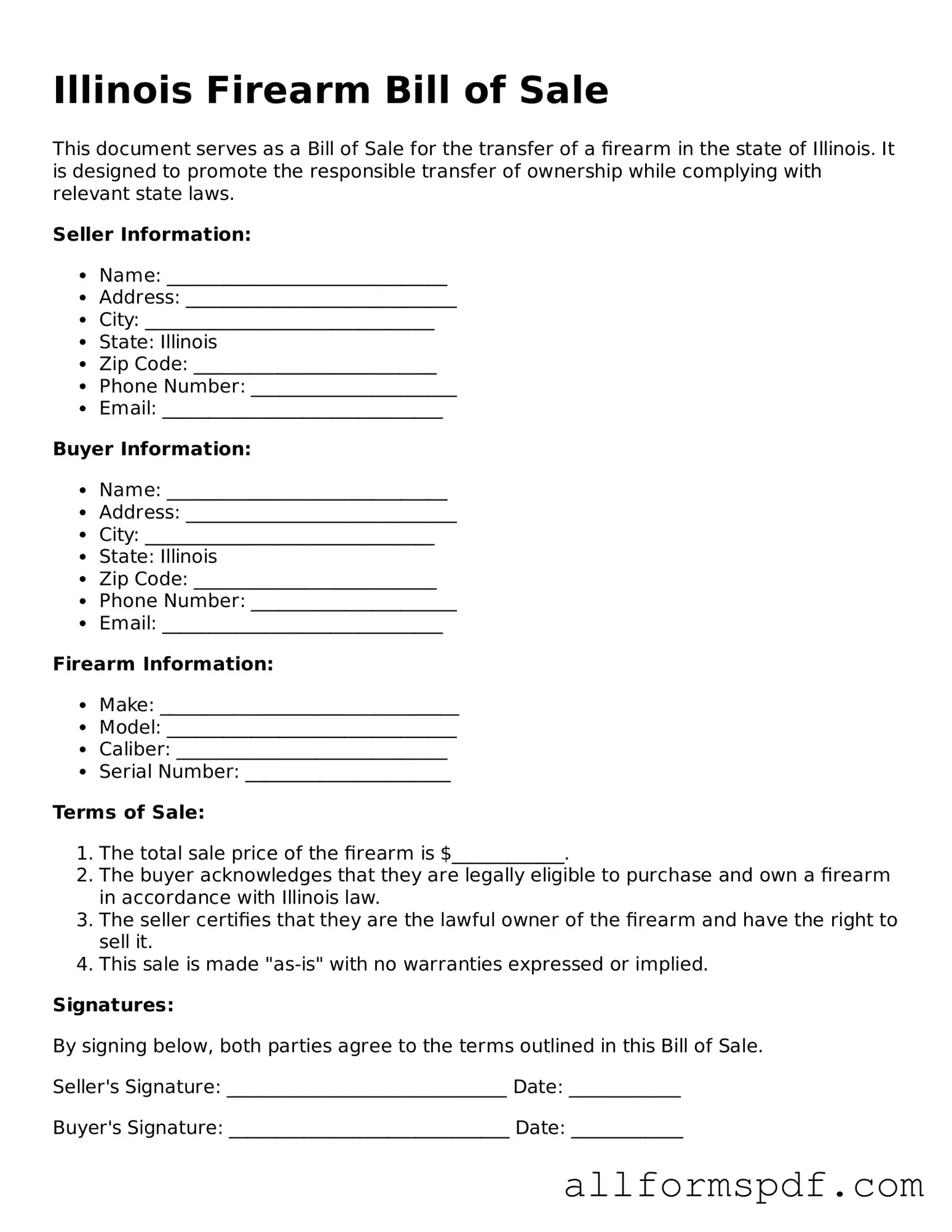When individuals fill out the Illinois Firearm Bill of Sale form, they often overlook important details that can lead to complications. One common mistake is failing to provide accurate information about the firearm itself. This includes the make, model, and serial number. If any of these details are incorrect or missing, it may create confusion regarding the firearm's ownership and legality.
Another frequent error involves the buyer and seller not properly identifying themselves. Each party must include their full name, address, and, in some cases, their identification numbers. Omitting any of this information can render the bill of sale incomplete, which may lead to issues if the transaction is ever questioned.
Many people also forget to date the bill of sale. Including the date is crucial because it establishes when the transfer of ownership occurred. Without a date, it can be challenging to prove when the transaction took place, which could be important for legal or tax purposes.
Additionally, some individuals neglect to have both parties sign the document. A signature serves as a formal acknowledgment of the transaction. If either party fails to sign, the bill of sale may not be considered valid, leaving both the buyer and seller in a precarious situation regarding the firearm's ownership.
Lastly, individuals sometimes do not keep a copy of the completed bill of sale for their records. This document serves as proof of the transaction and can be essential if any legal questions arise in the future. Retaining a copy ensures that both parties have access to the details of the sale, which can help resolve any disputes that may occur down the line.
